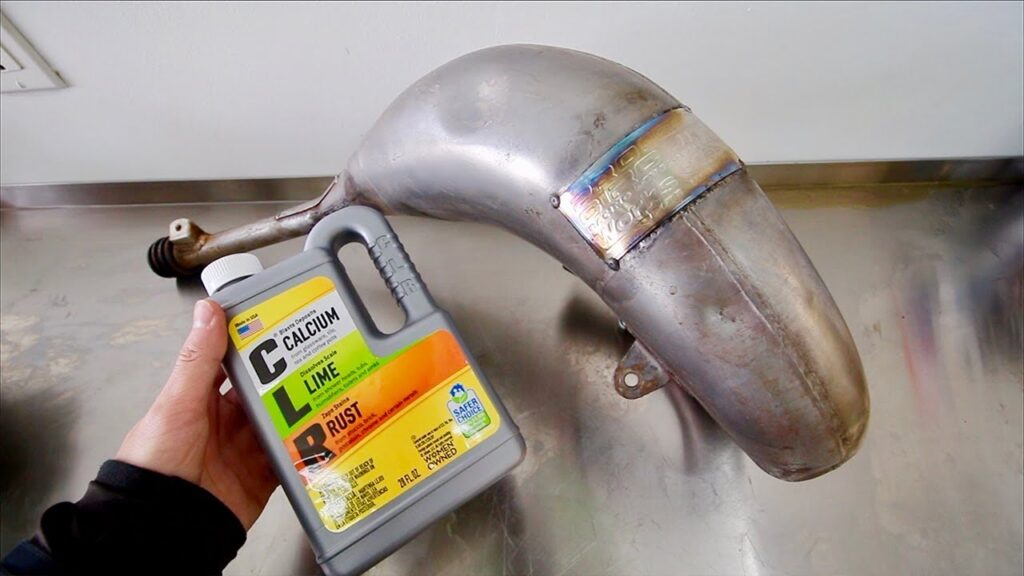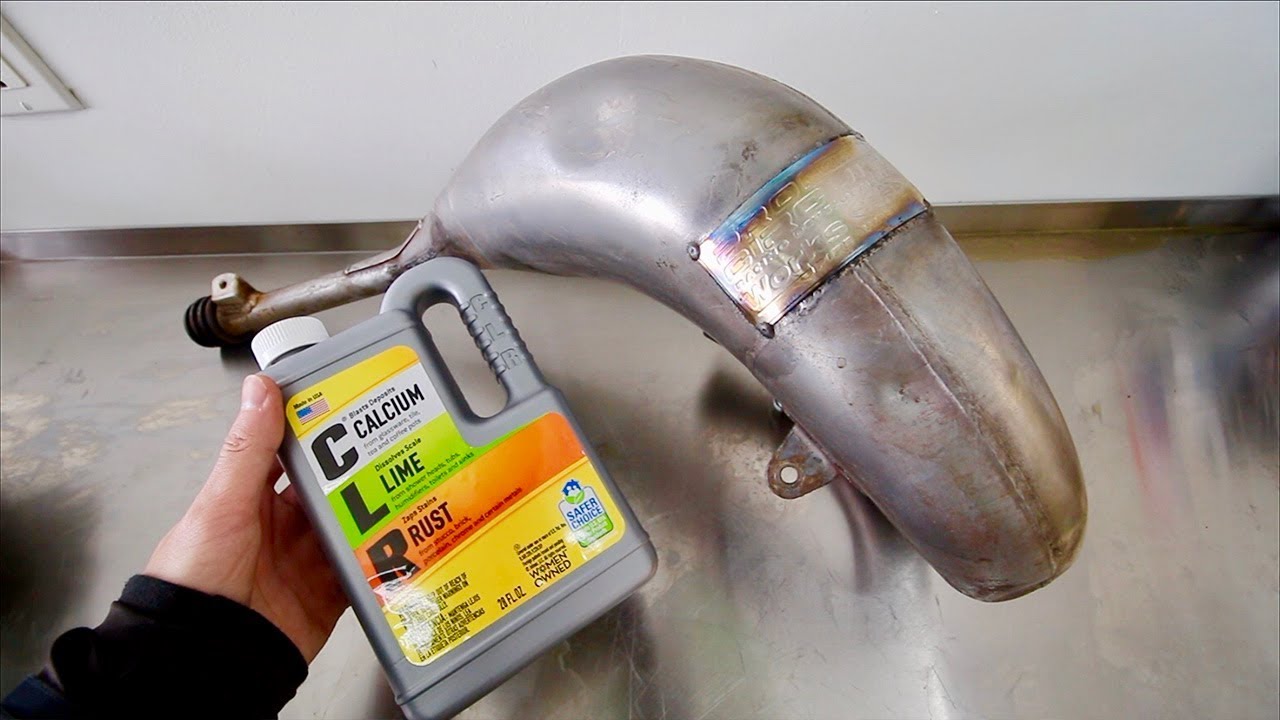
The Definitive Guide to Chemical Removal of Rust: Methods, Safety, and Best Practices
Rust, that reddish-brown layer that afflicts iron and steel, is more than just an aesthetic nuisance. It’s a relentless process of oxidation that weakens materials, compromises structural integrity, and ultimately leads to failure. While mechanical methods like sanding and grinding can remove rust, they’re often labor-intensive and may not be suitable for intricate or delicate items. That’s where chemical removal of rust comes in. This comprehensive guide delves into the science behind rust, explores various chemical rust removal methods, emphasizes safety precautions, and provides best practices to ensure effective and safe rust eradication.
Understanding Rust: A Chemical Perspective
Rust, scientifically known as iron oxide (Fe2O3·nH2O), forms when iron or alloys containing iron, such as steel, are exposed to oxygen and moisture. This electrochemical process involves the oxidation of iron, where iron atoms lose electrons and combine with oxygen to form iron oxide. The presence of water acts as an electrolyte, facilitating the electron transfer. Factors like humidity, salinity, and the presence of pollutants can accelerate the rusting process.
Unlike some metal oxides that form a protective layer (like aluminum oxide on aluminum), rust is porous and flaky. This allows oxygen and moisture to penetrate deeper, leading to continuous corrosion and eventual structural failure. Therefore, timely and effective rust removal is crucial for maintaining the longevity and integrity of metal objects.
Chemical Rust Removal Methods: A Detailed Overview
Chemical removal of rust involves using chemical solutions to dissolve or convert the rust into a more stable compound. Several methods are available, each with its own advantages and disadvantages. Here’s a breakdown of common chemical rust removal techniques:
Acidic Solutions
Acidic solutions are among the most potent and widely used methods for chemical removal of rust. They work by dissolving the iron oxide, effectively removing the rust layer. Common acids used for rust removal include:
- Hydrochloric Acid (HCl): Also known as muriatic acid, hydrochloric acid is a strong acid that rapidly dissolves rust. It’s typically used for heavily rusted items but requires careful handling due to its corrosive nature. [See also: Safety Precautions with Hydrochloric Acid]
- Phosphoric Acid (H3PO4): Phosphoric acid is less aggressive than hydrochloric acid and is often used in commercial rust removers. It converts the rust into a black, inert coating of iron phosphate, which can provide some corrosion resistance.
- Sulfuric Acid (H2SO4): Sulfuric acid is another strong acid that can effectively remove rust. However, it’s highly corrosive and requires extreme caution.
- Citric Acid (C6H8O7): A weaker organic acid, citric acid is a gentler alternative for removing rust, particularly from delicate items or when a less aggressive approach is desired. It’s often used in DIY rust removal solutions.
- Oxalic Acid (C2H2O4): Oxalic acid is effective at removing rust stains and is often used in cleaning products. It’s also toxic and should be handled with care.
When using acidic solutions, it’s crucial to follow the manufacturer’s instructions and wear appropriate personal protective equipment (PPE). After treatment, thoroughly rinse the item with water and neutralize any remaining acid with a mild alkaline solution (like baking soda) to prevent further corrosion.
Chelating Agents
Chelating agents are chemicals that bind to metal ions, forming a stable, water-soluble complex. This process effectively removes the rust by sequestering the iron ions. Common chelating agents used for chemical removal of rust include:
- EDTA (Ethylenediaminetetraacetic Acid): EDTA is a versatile chelating agent that can remove rust and other metal contaminants. It’s often used in industrial cleaning applications.
- DTPA (Diethylenetriaminepentaacetic Acid): DTPA is similar to EDTA but has a higher binding affinity for iron ions, making it more effective in some cases.
- Citric Acid (C6H8O7): As mentioned earlier, citric acid also acts as a chelating agent, albeit a weaker one compared to EDTA and DTPA.
Chelating agents are generally less aggressive than strong acids and are often preferred for delicate items or when a more controlled rust removal process is needed. However, they may require longer treatment times to achieve the desired results. [See also: Comparing Chelating Agents for Rust Removal]
Rust Converters
Rust converters, also known as rust reformers, don’t actually remove the rust. Instead, they convert the existing rust into a stable, inert compound, such as iron tannate. This compound forms a protective layer that prevents further corrosion. Rust converters typically contain tannic acid or phosphoric acid as active ingredients.
Rust converters are a convenient option when complete rust removal is not feasible or practical. They’re often used on large structures or in areas that are difficult to access. However, it’s important to note that rust converters only stabilize the existing rust and don’t restore the original metal’s strength or appearance.
Safety Precautions: Handling Chemicals Responsibly
Chemical removal of rust involves working with potentially hazardous substances. Therefore, safety should be the top priority. Always follow these precautions:
- Wear Personal Protective Equipment (PPE): Always wear gloves (chemical-resistant), safety glasses or a face shield, and a respirator (if necessary) when handling chemicals.
- Work in a Well-Ventilated Area: Many rust removal chemicals release fumes that can be harmful if inhaled. Work in a well-ventilated area or use a respirator to avoid inhaling fumes.
- Read and Follow Instructions: Carefully read and follow the manufacturer’s instructions for the specific chemical you’re using.
- Avoid Mixing Chemicals: Never mix different rust removal chemicals, as this can create dangerous reactions.
- Neutralize Acids: After using acidic solutions, neutralize any remaining acid with a mild alkaline solution (like baking soda) before rinsing with water.
- Proper Disposal: Dispose of used chemicals and contaminated materials according to local regulations.
- First Aid: Know the appropriate first aid procedures in case of accidental exposure to chemicals. Have a readily available source of clean water for rinsing.
Best Practices for Chemical Rust Removal
To achieve optimal results and ensure safety, follow these best practices for chemical removal of rust:
- Prepare the Surface: Before applying any chemical, remove loose rust and debris with a wire brush or scraper. This will allow the chemical to penetrate the rust layer more effectively.
- Choose the Right Chemical: Select the appropriate chemical based on the severity of the rust, the type of metal, and the desired outcome. Consider using a less aggressive method first, if possible.
- Follow the Instructions: Adhere strictly to the manufacturer’s instructions regarding concentration, application method, and treatment time.
- Monitor the Process: Regularly check the progress of the rust removal process. Avoid over-treating the item, as this can damage the underlying metal.
- Rinse Thoroughly: After treatment, thoroughly rinse the item with water to remove all traces of the chemical.
- Neutralize (if applicable): If using an acidic solution, neutralize any remaining acid with a mild alkaline solution before rinsing.
- Dry Completely: Dry the item completely to prevent further corrosion. You can use a clean cloth, compressed air, or a heat gun (on a low setting).
- Apply a Protective Coating: After rust removal, apply a protective coating, such as paint, primer, or a rust inhibitor, to prevent future corrosion.
Conclusion: Mastering Chemical Rust Removal
Chemical removal of rust is a powerful and effective method for eradicating corrosion and restoring metal objects to their former glory. By understanding the science behind rust, selecting the appropriate chemical method, prioritizing safety, and following best practices, you can achieve professional-quality results. Whether you’re restoring antique tools, maintaining industrial equipment, or simply tackling rust on household items, mastering the art of chemical removal of rust will empower you to preserve and protect valuable metal assets for years to come.

